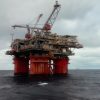A recent report by the European Environment Agency (EEA) reveals that only about one-third of Europe’s surface water is in good health, falling significantly short of the EU’s target to achieve good quality for all water bodies by 2015. As of 2021, just 37% of surface waters met at least a good ecological status, while only 29% achieved good chemical status across 19 member countries.
The deadline for this target has been extended to 2027, but current data indicates that Europe is likely to miss this goal by a considerable margin. EEA’s executive director, Leena Ylä-Mononen, emphasized the concerning state of Europe’s waters, highlighting the challenges to water security that the continent faces.
The report identifies agriculture as the primary contributor to the decline in surface water quality, citing excessive water extraction and pollution from farming practices. Additionally, coal-fired power plants have been found to release toxic particles, further compromising water health.
The situation is particularly dire in parts of western and central Europe, including Germany and the Netherlands, where a significant portion of water bodies are in poor condition. A stark example is the catastrophic fish die-off in the Oder River in 2022, largely attributed to pollution from salt mines and urban wastewater.

Despite the EU implementing extensive water management regulations nearly 25 years ago, the EEA’s report indicates that progress in improving water quality has stagnated over the last decade. This assessment underscores the need for urgent action to address the state of Europe’s waterways.
While groundwater quality remains comparatively better, with 91% rated as having good quantitative status and 77% achieving good chemical status, these improvements have been minimal since 2015, with only a one-percentage-point increase noted.
To tackle the poor state of Europe’s waters, the EEA suggests a multifaceted approach that includes reducing water demand, minimizing the release of harmful substances, and restoring rivers and wetlands. The recent floods that impacted central Europe serve as a reminder of the urgency of these measures.
Trine Christiansen, a co-author of the report, noted that a healthy aquatic ecosystem is crucial for mitigating the impacts of climate change, allowing societies to better cope with extreme weather events.
In light of the report’s findings, water advocacy group Water Europe has called for significant investments in water infrastructure, totaling €255 billion by 2030. This investment is viewed as essential not only for safeguarding Europe’s economy but also for ensuring environmental sustainability.
Water scarcity, which currently affects one in three Europeans, poses a risk to key industries, including semiconductor production, data centers, renewable hydrogen, and electric vehicle batteries.

